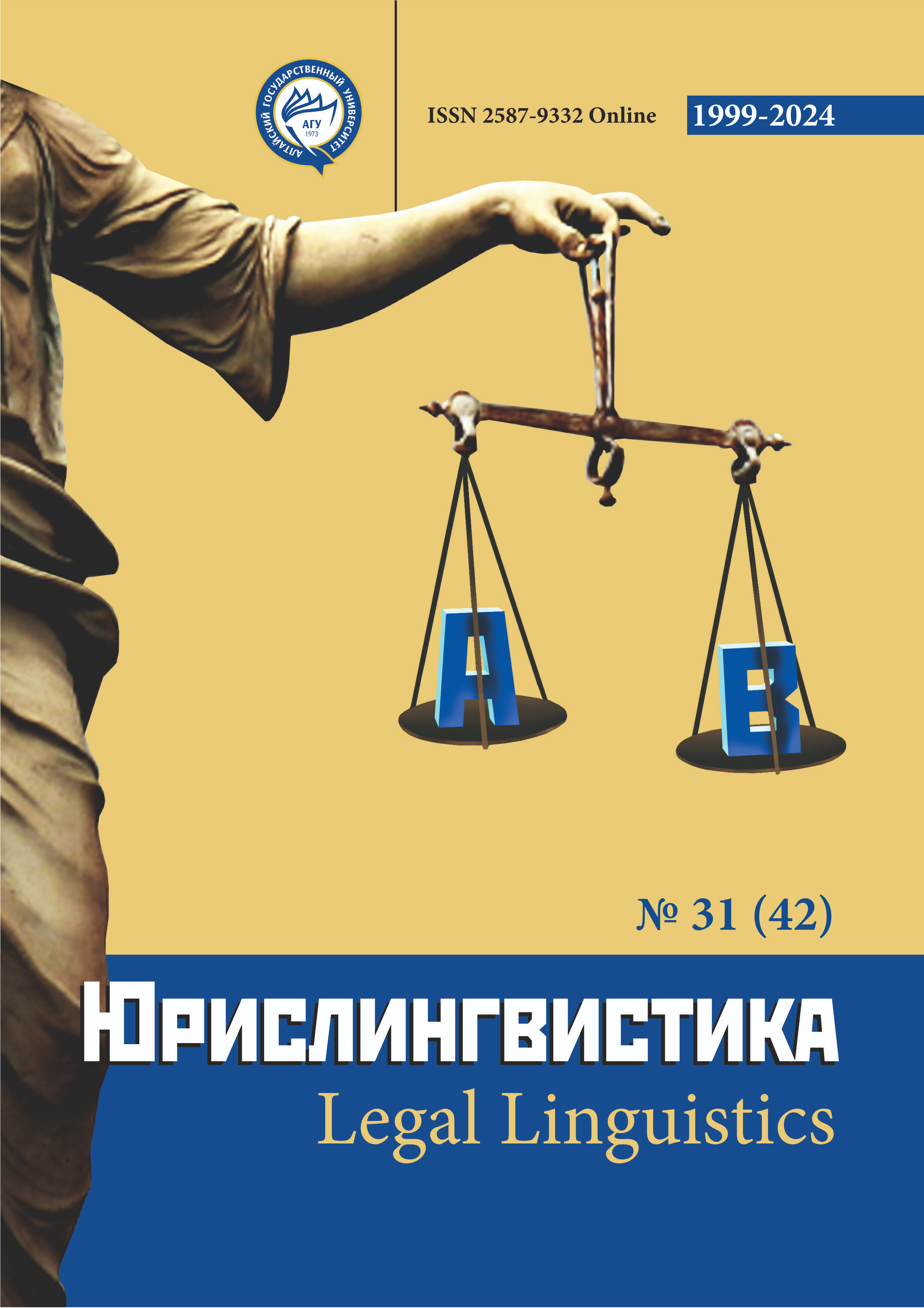On the Concept of a Single Sexual Crime
УДК 343.54, ББК 67.408.113
Abstract
The absence in the law of the concept of a single crime gives rise to a situation of legal ambiguity in which acts committed under similar circumstances may receive different legal assessments. The concept of a single crime should be enshrined in the criminal law itself and become the formal basis for its interpretation in relation to the characteristics of various groups of crimes. For the purposes of qualifying sexual crimes, a single continuing crime can be defined in the footnote to the article with which Chapter 18 of the Criminal Code of the Russian Federation begins as follows: «In cases where two or more acts of a sexual nature were committed with the same intent in legally identical ways, the act should be considered as a single continuing crime». Perhaps this approach will be the first step towards creating a common definition that can be enshrined in the General Part of the Criminal Code of the Russian Federation, for example, in Art. 141 of the Criminal Code of the Russian Federation. Since law enforcement practice defines a single crime through the concept of single intent, its definition must be enshrined in Part 4 of Art. 25 of the Criminal Code of the Russian Federation and defined as intent to commit two or more acts that arose before the first of these acts or in the process of committing one of them, when the degree of specification of the desired actions and their consequences makes it possible to determine the characteristics of a specific crime or group of crimes. The practice of imposing punishment also requires, along with other circumstances, taking into account the number of episodes of criminal influence on the victim, as well as the duration of the period of criminal influence on them, which must be reflected in the act of official interpretation.
Downloads
Metrics
References
Апелляционное определение N 22-1552/2021. URL: https://demo.garant.ru/#/document/403761684/paragraph/1/doclist/1110/showentries/0/highlight/развратные%20действия%20%20сети%20интернет:53.
Быкова Е. Г., Яшков С. А. О квалификации изготовления и оборота материалов или предметов с порнографическими изображениями несовершеннолетних, совершенных в отношении лица, не достигшего четырнадцатилетнего возраста / Уголовное право. - 2017. - № 3. - С. 23.
Бюллетень судебной практики по уголовным делам в отношении несовершеннолетних и гражданским делам, вытекающим из семейных правоотношений, за 3 квартал 2019 г. (утв. президиумом Свердловского областного суда 18 декабря 2019 г.). URL: https://demo.garant.ru/#/document/73403981/paragraph/1/doclist/3794/15/0/0/понуждение%20к%20действиям%20сексуального%20характера:40
Залов А. Ф. Проблемы квалификации продолжаемых изнасилований / Юридическая наука и правоохранительная практика. - 2014. - №1(27). - С. 28-29.
Михайленко И., Силаев С. О продолжаемых преступлениях против половой неприкосновенности и половой свободы / Уголовное право. - 2014. - № 5. - С. 72-75.
Обзор апелляционной практики судебной коллегии по уголовным делам Верховного суда Республики Саха (Якутия) за 2021 год. Апелляционное определение № 22-1552/2021. URL: https://demo.garant.ru/#/document/403761684/paragraph/1/doclist/1110/showentries/0/highlight/развратные%20действия%20%20сети%20интернет:53.
Приговор Ленинского районного суда г.Барнаула от 11.05.2022 по делу № 2-43/22 / Архив Ленинского районного суда г. Барнаула.
Справка по результатам проведенного Самарским областным судом анализа судебной практики рассмотрения уголовных дел о совершении преступлений в сфере компьютерных технологий. URL: https://demo.garant.ru/#/document/405909877/paragraph/1/doclist/3794/24/0/0/понуждение%20к%20действиям%20сексуального%20характера:45
Copyright (c) 2024 Надежда Тыдыкова

This work is licensed under a Creative Commons Attribution 4.0 International License.
The authors, which are published in this journal, agree to the following conditions:
1. Authors retain the copyright to the work and transfer to the journal the right of the first publication along with the work, at the same time licensing it under the terms of the Creative Commons Attribution License, which allows others to distribute this work with the obligatory indication of the authorship of this work and a link to the original publication in this journal .
2. The authors retain the right to enter into separate, additional contractual agreements for the non-exclusive distribution of the version of the work published by this journal (for example, to place it in the university depository or to publish it in a book), with reference to the original publication in this journal.
3. Authors are allowed to post their work on the Internet (for example, in a university repository or on their personal website) before and during the review process of this journal, as this may lead to a productive discussion, as well as more links to this published work (See The Effect of Open Access).











